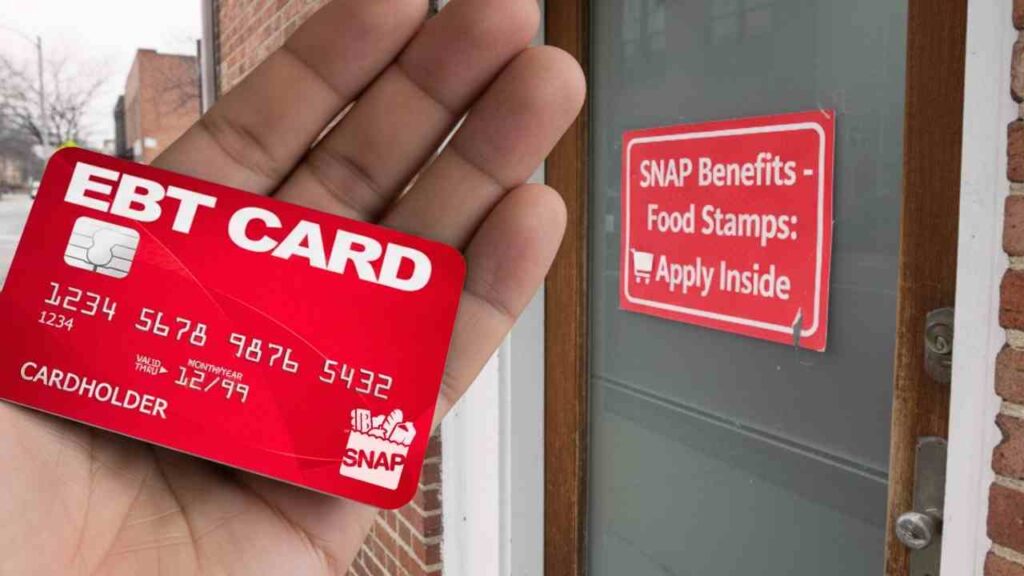The Trump administration has announced that all approximately 42 million recipients of SNAP benefits (Supplemental Nutrition Assistance Program in the U.S.) will need to reapply for their benefits in order to combat fraud detected in the program.
The main reasons explained, as per the government officials, are alleged cases of payments to deceased individuals (186,000 identified) and duplicate benefits, although critics argue that the fraud is exaggerated and that this could affect legitimate beneficiaries.
What are SNAP benefits and why is this news?
The likelihood of its implementation is high, given the authority of the Department of Agriculture (USDA), but it faces legal opposition from 21 states and hunger advocacy groups, which could delay or modify it; experts are already suggesting that beneficiaries prepare their documentation because it is likely to pass, albeit with administrative and legal complexities.
SNAP is a federal program in the United State that provides EBT cards to low-income individuals to purchase food at an annual cost of around $100 billion in 2024. This announcement comes against a backdrop of recent cuts (such as the One Big Beautiful Bill of July 2025, which reduced payments by $186 billion) and a recent government shutdown that disrupted payments, intensifying scrutiny of the program’s efficiency.
Maximum SNAP benefits in the fiscal year 2026
The maximum SNAP benefit allotments for the 48 contiguous states and Washington, D.C., effective from October 1, 2025, through September 30, 2026, are as follow:
| Household Size | Maximum Monthly Allotment |
|---|---|
| 1 person | $298 |
| 2 people | $546 |
| 3 people | $785 |
| 4 people | $994 |
| 5 people | $1,183 |
| 6 people | $1,421 |
| 7 people | $1,571 |
| 8 people | $1,789 |
| Each additional person | + $218 |
Allotments for Alaska, Hawaii, and U.S. Territories
Maximum benefits are higher for Alaska, Hawaii, Guam, and the U.S. Virgin Islands due to higher food costs. The figures below are specifically for a four-person household as a reference:
-
Alaska: Ranges from $1,285 to $1,995
-
Hawaii: $1,689
-
Guam: $1,465
-
U.S. Virgin Islands: $1,278
Why should all SNAP beneficiaries reapply?
The USDA, led by Secretary Brooke Rollins, mentions rampant fraud as the primary justification, including payments to 186,000 deceased individuals in 29 Republican-led states and more than 500,000 cases of “double-dipping” (receiving duplicate benefits).
This is based on an audit initiated in May 2015 that uncovered arrests for illegal transactions and requests for sensitive data (such as Social Security numbers) from states. However, advocates like the Food Research & Action Center argue that actual fraud is minimal (less than 1% of the budget) and that the average benefit is only $6 per day per person, making the cuts seem disproportionate.
When will the general reapplying be applied to all households?
Although details have not been released, the reapplication is part of a “comprehensive reform” planned for the coming weeks. It could begin in late 2025 or early 2026, initially affecting cooperative states. It differs from routine recertification (every 6-12 months) because it is a one-time, large-scale process for all recipients. States administer SNAP, so implementation will vary: some may prioritize expedited verifications, while others face delays due to litigation.
Groups like the Center on Budget and Policy Priorities (CBPP) maintain that fraud accounts for less than 1% of the total, and that many “errors” are unintentional due to income fluctuations. Furthermore, the USDA’s data request has been criticized for privacy risks, as it includes Social Security numbers and addresses, potentially exposing beneficiaries to identity theft.
